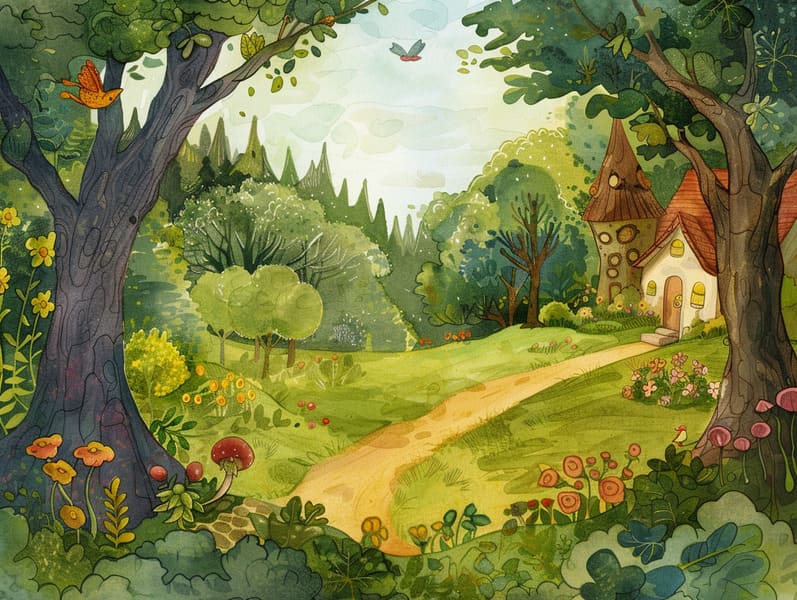The Beginning of Fairy Tales with Their Unending Wonder.
The Beginning of Fairy Tales with Their Unending Wonder.
Blog Article

Legendary fairy tales have historical significance. These narratives have been spoken from one generation to the next millennia before they were ever recorded. They sprang from a variety of civilizations, including Western traditions. They were initially disseminated among mature audiences, often carrying themes and messages pertaining to the societal norms and beliefs of the time.
The Brothers Grimm, Jacob and Wilhelm (the Grimm brothers), were among the first to compile many of these beloved tales. Their anthology, "Grimm's Fables," included classics like "The Little Glass Slipper," "Little Brother and Little Sister," and "Little Snow White," which have since become essentials in the world of famous fairy tales. Similarly, Hans Christian Andersen's imaginative tales, such as "The Sea Maid," and "The Duckling that Could," have captivated hearts worldwide, establishing their place in the pantheon of timeless fairy tales.
Though they are centuries old, traditional fairy tales remain as applicable as ever, especially as children's night stories. These delightful tales are now available in many formats, including vividly illustrated books, delightful animations, and online storybooks.
Their ongoing significance can be linked to several delightful features:
Important Morals: Timeless fairy tales often provide important moral lessons. Stories like "The Wolf and the Liar" teach the importance of being truthful, while "The Race of the Tortoise and the Hare" point out the benefits of persistence and unassuming nature. These stories offer children clear distinctions between moral and immoral, molding their moral compass in a subtle yet impactful way.
Empathy and Understanding: Timeless fairy tales frequently illustrate figures facing challenges and problems, motivating listeners to sympathize with their struggles and encourage their triumphs. For instance, "Beauty and Her Beast" emphasizes the necessity of seeing beyond looks to know the true essence of a person, fostering sympathy and insight.
Cultural Appreciation: Many fairy tales are imbued with the cultural contexts from which they were born. Understanding these fairy tales can provide fascinating glimpses into different historical contexts, strengthening a sense of international awareness and perception.
Inventiveness and Fantasy: The whimsical elements in timeless fairy tales—mythical creatures—engender children’s innovations. These tales guide readers to extraordinary realms, encouraging inventive ideas and a sense of excitement that remains a lifetime.
Ancient fairy tales are not only delightful but also pedagogical. They function as whimsical tools in cultivating various intellectual and emotional capacities in young readers. When timeless fairy tales are read aloud, they cultivate language acquisition by introducing new words and elaborate sentence structures. This practice also improves auditory skills and mindfulness, as young ones hang on every word, ready to see what happens next.
Furthermore, talking about the themes and characters of classic fairy tales can improve problem-solving abilities and thinking skills. Kids are led to find patterns, anticipate outcomes, and get cause and effect. These discussions also further the young convey their thoughts and feelings, strengthening their emotional intelligence.
In today’s high-tech era, the presence of online storybooks has made these fairy tales more reachable than ever. Internet sites and apps feature wide arrays of children's fairy tales that can be accessed or played anytime, anywhere. Fairy tales narrated are particularly prevalent, offering an fascinating method for the young to experience these charming stories. Narrated books and spoken videos move characters and settings to life, often paired with charming sound effects and musical scores that enrich the narrative journey.
The timeless allure of ancient fairy tales lies in their ability to change to present eras while maintaining their underlying messages. Contemporary revisions of these tales often present more representative figures and modern settings, making them pertinent to today’s audience. However, the essential messages of valour, charity, and even-handedness remain unchanged, continuing to move audiences of all ages.
Ancient fairy tales also offer a sense of familiarity and homeliness. They deliver up a well-ordered narrative with a straightforward beginning, middle, and end, often ending with the resolution of conflicts and the triumph of virtue over wickedness. This foreseeability can be relieving for children, making known a sense of solidity in an variable world.
Old fairy tales continue to delight and edify new generations, maintaining their splendor and value in modern society. As bedtime stories for kids, they share a perfect blend of charm and understanding, enriching moral values, empathy, and creativity. The accessibility of digital storybooks and the prevalence of fairy tales told out loud validate that these classic tales remain reachable to new generations.
By protecting and passing on these fairy tales, we continue to appreciate the rich tapestry of cultural heritage and cultural heritage. Whether you are seeing a beautifully illustrated book, seeing a electronic library, or hearing an spoken story, the elegance of traditional fairy tales is always within reach. These tales illustrate short fairy tales for kids of the enduring influence of narratives and its ability to bring us together across epochs and places.
If you are delving into a vividly illustrated book, accessing a web-based library, or listening to an audiobook, the spell of children's fairy tales is always within reach.
These tales teach us of the immortal effect of tales and its ability to unify us across centuries and lands, weaving a spell that captivates and teaches alike.